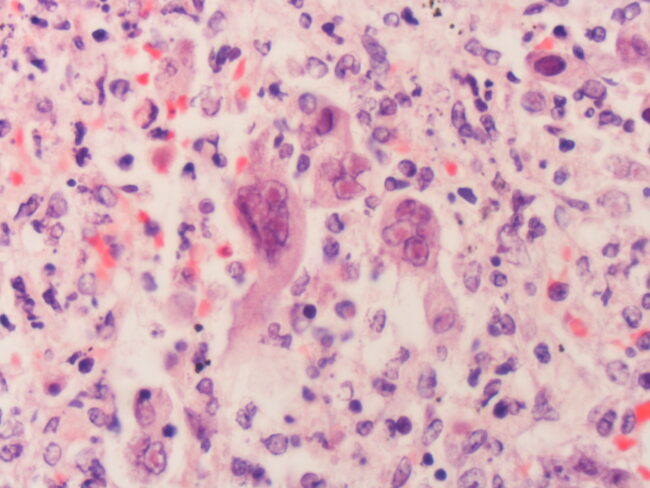Herpes Simplex Virus (HSV), estimated to have infected 3.7 billion adults under 50 worldwide, is one of the most successful human viruses. Yet, most individuals don’t know they have it[1]. A highly contagious virus, HSV spreads through skin-to-skin contact. Specifically, viral subtype HSV-1 is mainly associated with the oral tract, whereas HSV-2 infection typically arises in the genital tract[2]. Most HSV carriers are asymptomatic, but when symptoms occur, they typically manifest as blisters or ulcers at the infection site. HSV is a virus of the nervous system, infecting sensory neurons running from the sense organs (e.g., the tongue to the brain)[3]. Within these sensory neurons, HSV enters an important phase, termed latency. This means the virus persists within the cell without causing any noticeable symptoms or activation of the immune system. During latency, the virus undergoes limited gene expression and replication (spreading) is mainly suppressed[3]. Latency allows HSV to persist within individuals for extended periods while evading detection by the immune system, maximising its survival. During latency, the HSV virus can become periodically reactivated by various factors (e.g., stress). After reactivation, viral replication begins again, rendering the individual contagious. Consequently, the virus can spread to new hosts, allowing its continued propagation throughout the population[3].
Evidence suggests that humans and HSV have shared a co-evolutionary journey spanning millennia[2]. Studies examining ancient DNA have unearthed traces of HSV-1 dating back to the early Bronze Age, underscoring the enduring relationship between the virus and its human hosts[4]. Latent infection has likely played a major role in the virus’s persistence and asymptomatic presentation in many humans.
Although latency in HSV plays a key role in the virus’ survival, much remains unknown about how the virus establishes its latent form within sensory neurons. The molecular mechanism behind its viral reactivation also remains unclear. Studying the molecular mechanisms of latency and reactivation illuminates the symbiotic evolution of viruses and hosts, driven by immunological, environmental, and genetic factors. Moreover, these insights are imperative for developing effective strategies to target and prevent HSV.
[1] https://www.who.int/news-room/fact-sheets/detail/herpes-simplex-virus
[2] https://www.youtube.com/watch?v=GGfqkuxbIC0
[3] https://www.youtube.com/watch?v=e_F91jne9_Y
[4] https://www.inverse.com/science/ancient-herpes-skeleton-teeth-mystery
Edited by Hazel Imrie
Copy-edited by Rachel Shannon

